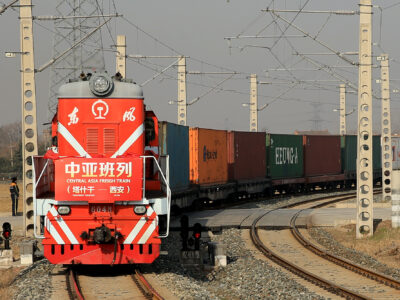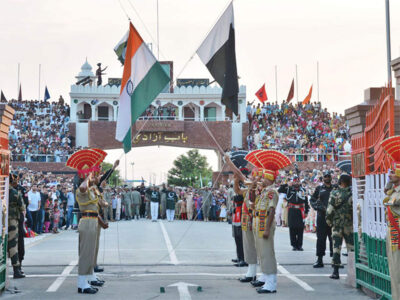Syed Ali Zia Jaffery
Reminiscing the Cuban Missile Crisis, Robert McNamara said: “Kennedy was rational; Khrushchev was rational; Castro was rational. Rational individuals came that close to total destruction of their societies. And that danger exists today. The Cuban Missile Crisis continues to be remembered as the incident that brought two nuclear states on the cusp of a catastrophe. As pointed out by McNamara, both Nikita Khrushchev and John F. Kennedy weighed the costs and benefits while factoring in the devastation that a nuclear confrontation could cause. Rationality, coupled with luck, thus, played a crucial role in averting a disaster of the greatest proportion. Fast-forward to 2019, we saw two nuclear-armed neighbors, India and Pakistan, in the thick of a perilous crisis, one that witnessed the two-way use of force. The crisis terminated with little to no third-party intervention, when Pakistan’s Prime Minister, Imran Khan, provided an unconditional off-ramp to India. The Pakistani premier’s decision-making was dictated by a logic: India and Pakistan can ill-afford miscalculations of any kinds and types, given the weapons they have in their armories. In other words, the Pakistani leadership believed that the costs of climbing up the escalation ladder would far exceed the pay-offs, however little they might be. That the Indian leadership was brazen in its crisis behavior and messaging is an indication that the restraint, responsibility, and resolve shown by the Pakistani leadership proved decisive in controlling escalation and terminating the crisis. In a fraught strategic environment, making sense of the leadership variable is of import when it comes to understanding the nature of crises going forward.
In his book “Escalation and the Nuclear Option”, Bernard Brodie wrote that escalation control is an exercise in deterrence. In other words, a state had to control escalation by deterring its adversary from climbing up the escalation ladder, primarily because rung-climbing represented a clear shift in the level and scale of a crisis. During crises and peacetimes, pragmatic assessments of costs go on to affect escalation patterns and crisis dynamics. The balance of resolve to escalate engenders deterrence through mutual fear. However, what is paramount in such a situation is a rational calculation on the part of a decision maker to get off the ramp. It could be argued that deterrence hinges not only on credibly communicating the expected costs to the adversary, but also on the adversary believing those to be colossal.
Writing on the state of deterrence equilibrium in South Asia, Rabia Akhtar argued:” It should be a tad comforting to note that, it is highly unlikely that India or Pakistan can destroy each other’s arsenals in a manner that leaves no room for nuclear retaliation. However, it is good news so as long as rationality does the talking. An Indian leadership that is infused with religious fundamentalism and superiority does not and should not be expected to believe in the rational model of decision-making.”
In a crisis-prone region like South Asia, crisis stability is a critical component of regional strategic stability. Given that there is a great deal of uncertainty that surrounds all kinds of crises, crisis stability is said to be fragile. The state of crisis stability in a future Indo-Pak crisis could be further strained because an irrational leadership in India is itching to sidestep the exorbitant costs of recklessness. That as recent as 2019, New Delhi tried to eschew Pakistan’s response thresholds and resolve is emblematic of one worrying phenomenon: India is willing to plunge deeper into crises, regardless of costs, however high they might be. If such a resolve is shown by a party that wants to deter, there is some good news as far as crisis stability is concerned. However, if compellence is being sought, the impact on crisis stability will certainly be deadly.
Let’s revisit the Pulwama-Balakot Crisis and the crisis behavior of the Indian leadership. Right from vows to punish Pakistan, to carrying-out airstrikes inside mainland Pakistan, to threatening to launch missiles on Pakistani targets, the Indian leadership displayed a predilection towards circumventing rationality. The mere thought that intruding Pakistan’s airspace would not lead to further escalation, defies logic. The threat to hurl missiles and, resultantly, horizontally escalate the crisis was reflective of a mindset that believed that there are benefits to be elicited from escalation of hostilities.
If the rhetoric from the Indian leadership since last year’s crisis is anything to go by, one can reasonably argue that not only a future crisis between the two countries is likely to occur, but is also politically expedient. What then becomes of crisis stability, is a question that needs to be addressed. With clamors to capture and snatch Azad Kashmir and Gilgit-Baltistan becoming a part of the Indian political lexicon against Pakistan, the nature of crises could alter for the worse going forward. India’s counterforce temptations and tinkering with the No First-Use policy , coupled with dangerous politico-military objectives and a leadership willing to use force with impunity, spell trouble for the future of crisis stability. Would Pakistan perceive India’s advances as limited, or will it consider them as a precursor of something bigger and deadlier? With an Indian leadership that, instead of exercising caution believes in throwing caution to the wind, Pakistan is least expected to take comfort from anything.
Fuelled with religious fanaticism and sense of superiority, the current Indian leadership is treading a suicidal path, one that fails to see the roadblocks created by a robust Pakistani nuclear deterrent. In a future crisis, the Modi-Shah-Doval trio will neither change tack on their political and strategic pledges nor will they find no political space to show restraint, something that will compel India to take refuge in risk-taking. That in and of itself will tantamount to miscalculations of serious proportions, putting exceeding pressures on Pakistan to counter prospective Indian moves. The end-result of all this will be a tenuous state of the even-otherwise convoluted scaffold of both crisis and deterrence stability. While technologies and disputes are important propellants of instability in the region, the leadership variable cannot be dissociated from the overarching troubles related to crisis stability, a factor that could make or break strategic stability in South Asia.
It is imperative to mention that, dissecting the leadership variable is essential in a milieu marked and marred by India’s efforts to evade deterrence in a bid to achieve strategic ends. To parse this factor in the context of South Asia, two questions need to be asked. One, how will risk-acceptant leaders deal with bilateral deterrence during crises? Two, how will those leaders go on to effect change in the behavior of a relatively rational, risk-averse adversary? These two inquiries will help better fathom how crisis stability in a future nuclear-tinged crisis between India and Pakistan does not make for good reading.
Syed Ali Zia Jaffery is Research Associate, Center for Security, Strategy and Policy Research, University of Lahore.








Comments